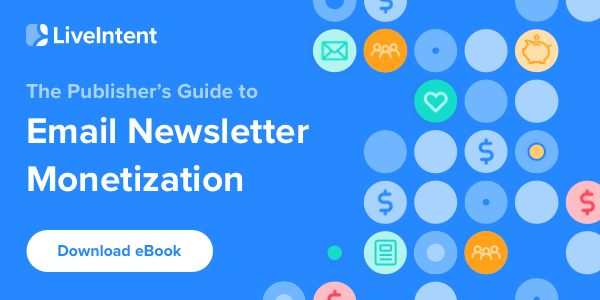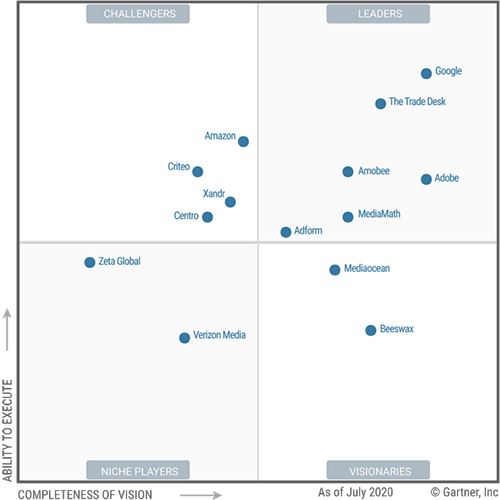 |
|||||||||||||||
|
|||||||||||||||
| Advertising Spend Going Up |
Image sourced from Mediapost
|
| 2020 was a tumultuous year for publishers, but signs that we're rebounding couldn't be more clear. For instance, just take a look at this U.S. Ad Market Tracker, a collaboration between MediaPost and Standard Media Index based on total ad spending by the major agency holding companies. You'll note a steady growth over a period of four months, starting in August, that came after a precipitous decline in ad spend starting in March fueled by the impact of Coronavirus. Overall, digital has been the major media catalyst for growth, expanding 29.3% in November. This completely jibes with what pubs have been telling us since the summer after programmatic started showing signs of recovery as early as May. We heard even more cautious optimism in October, as revenue specialists talked about shifting focus towards revenue diversification strategies, first-party data strategies, and coming out of their silos to work more closely across their businesses and within the industry. |
| Moving further into 2021, it's going to be important for pubs to prioritize non-advertising revenue growth and reduction strategies. Many of those strategies will also prove useful in surviving the coming cookipocalypse. |
| The New York Times Weathered COVID With First-Party Data |
| One of our favorite reads this week was Adweek's Andrew Blustein's Q&A with Pranay Prabhat, a Senior Director overseeing Digital Ads Engineering at The New York Times, about The New Your Times weathering the ad-spend slowdown in preparation for a life without cookies. Not only did the Times deprioritize ads to focus on unprecedented subscription growth, in June they launched a first-party data marketplace for direct-sold ads using just its own first-party data. "This first-party program is our answer to the shifting landscape of online advertising data and part of our move to better protect our readers’ privacy," recently wrote Prabhat. "Our program doesn’t rely on third-party data or cookies, but instead focuses only on what readers do on our site and mobile apps." The Times plans to build out more than 75 audience groups based on characteristics like age, income, technology enthusiast, people interested in fashion. They're also working on building out proprietary ad metrics, like time spent. |
| What the Times is doing reminds us of a recent webinar with Permutive and Insider Inc. about Insider's first-party data play. But not every publisher has the scale of the New York Times or Insider. That's exactly what senior editor Lynne d Johnson asked Insider's VP of Programmatic Sales Chris Ryan during the webinar. She again posed the question to Julia Beizer, Chief Product Officer and Global Head of Digital of Bloomberg Media, during her keynote chat at our recent AdMonsters Publisher Forum Plus. Unfortunately, the future of monetizing the open web will highlight the pubs who are data-rich vs those who are data-poor. But that's where ad tech vendors can come in and help smaller publishers pool together to build privacy-forward solutions at scale. We know some of you are on that path already. |
| 2021, Say Hello to Email | ||
| If 2020 taught us anything, it's that you can never be too prepared. And we'll undoubtedly have to put what we learned in the last year to the test as we brace ourselves for what waits at the other side of 2021—the death of the third-party cookie. To stay ahead, publishers will need to focus on immediate business needs while preparing for a future without third-party cookies. The writing's on the wall—the difference between flourishing and floundering in the new year and beyond comes down to strategies that prioritize revenue stream diversification. Fortunately for publishers, those diverse revenue streams are already in arms reach—say ‘hi’ to email. With more than half the world’s population using email, it’s likely you’re already engaging with those users through email newsletters. And if you’re not, now’s the time to start. |
||
| Email newsletters are inherently logged-in media that never relied on cookies, with content already curated to user interest. This medium presents publishers with a tremendous opportunity to forge powerful one-to-one relationships with subscribers and unlock new revenue streams by placing advertising inventory in email newsletters—an important strategy during uncertain times like a pandemic or the cookiepocalypse. Because email is a logged-in environment, publishers can boast reach with real, engaged people. That alone enables publishers to foster higher engagement rates for their advertisers and higher CPMs for themselves. It’s a win-win. With email inventory, publishers can also make strides toward bridging the gap between a world with third-party cookies and one without. Through email advertising, publishers can collect user feedback that points at engagement, interest, and intent on websites and apps. These data points will be critical to publisher survival in the new era as cookies depart and first-party data takes the throne. |
||
|
||
 |
| Ding Dong, Adobe Flash is Dead |
 |
| It's the final nail in the coffin for Adobe Flash. If you're a Windows 10 user, you may have seen a warning sign telling you that it was imperative that you delete Flash now. Yes, it's true, as of December 31, 2020, after nearly 25 years, Adobe will no longer support the technology that gave rise to web video and supported a range of creative advertising projects over the years. Adobe Flash was once the wave of the future. That was until it wasn't. Flash not only brought us web-based video, but it made the web a lot less static, making animation and interactivity ubiquitous. Oh where, oh where, would YouTube be without Flash? |
| Once the darling of the advertising industry, Flash was lauded for its ability to bring together assets, animation and code into one single package that could be embedded anywhere. Resource hog that it was, web browsers long ago blocked Flash from working on sites and in ads due to its inherent security risks. Besides, Apple killed it off in mobile early on. That signaled the death knell for sure. But now, we can finally say that it's on its last breath. Or can we? Flash's authoring tool will continue to live on as part of Adobe Animate and its rendering engine is still included in Adobe AIR. But pretty much everywhere else, HTML5 reigns supreme. |
 |
||
|
||
 |
||
|
||






